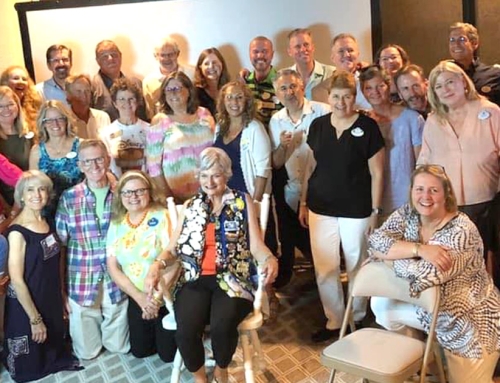 (A post by one of our ILS team members.)
(A post by one of our ILS team members.)
Service Recovery.
In business, it’s a system to help employees correct customer situations that have gone wrong.
At Integrated Loyalty Systems, we find that companies and organizations with a real eye on outstanding service have a baked-in Service Recovery program that provides structure and flexibility for all team members to solve customer issues quickly.
A Formula For Success: HEART++
Our team uses an acronym called HEART++ (heart plus plus) to make the process of Service Recovery in healthcare easy to remember. Each letter or symbol represents a word or phrase to remind us of how to proceed in the Service Recovery process:
H = Hear the patient’s complaint. Listen actively to let them know they are heard.
E = Empathize with the patient. Let them know you can identify with their concerns.
A = Apologize for the issue that occurred.
R = Resolve the issue for the patient as quickly as possible. On the spot, if you can.
T = Thank the visitor for bringing the issue to your attention.
+ = Plus it all up. Add something extra. Is it a kind word? A phone call? A note? A gift card?
+ = Track it. Be sure to record the situation so employees can learn and share.
What Happens When There’s NOTHING TO DO At Walt Disney World?
Years ago, one of my first jobs at Walt Disney World was as a Guest Relations host at the Magic Kingdom. After extensive training on the ins and outs of the entire Walt Disney World property, I was scheduled to “work the counter” in City Hall with my Trainer. During one of my first shifts, a man stormed in with his wife and two kids in tow and walked right to me. He threw his three-day tickets on the counter and said loudly, “I want my money back, there’s nothing to do here!”
I was stunned into silence. Looking to the tickets on the counter and then back to the angry face of that guest, my mind went blank. Nothing to do? It was inconceivable to me that anyone would think that there’s “nothing to do” at a Disney theme park. After more silence, my trainer stepped in and took over. “Hi there, my name is Chas,” he said. “Tell me what’s going on.” We all moved down to a more secluded part of the counter.
And with that, the angry man (Larry) launched into his complaint. It was his family’s first visit to Walt Disney World and he wanted it to be great. But it wasn’t working out that way. And we listened. We listened a lot. We listened to a story involving a family man, his wife Bridget, and their kids Maddie and Aiden, who scrimped and saved for two years and traveled from Nebraska to Walt Disney World, and had expectations of a fun Florida vacation with Mickey Mouse. They had never visited the Disney parks before and they were hot and overcome by the world-famous Florida humidity.
My trainer, Chas, nodded his head. “You’re right,” he agreed. “It’s hot and muggy here in Florida.” I added that as a Californian, it had taken me a while to get used to the weather in Florida, too.
Over the next 15 minutes, Chas and I spent time with Larry, helping him to plan his day, providing maps and information, and overall setting him up for success. All using a system very similar to HEART++.
Chas thanked Larry and his family for stopping into City Hall and allowing us to assist him and his family. He asked, “Have Jim and I given you some good ideas on how to get around the park today?” The whole family agreed that we had. And for the first time since walking in, they were smiling.
Before they left, Chas reached under the counter and handed them four tickets to the Diamond Horseshoe Revue, a live theater show in Frontierland. Normally these tickets are hard to come by, but Guest Relations had a few held over each day for situations just like this. We didn’t give show tickets to every guest that came and complained, but Chas felt that in this situation, it would be a nice way to “plus it up.”
Larry thanked us. And as he and his family walked out of City Hall and out into the park, we imagined them all having a much better experience. One final piece of the process — Chas filled out a small piece of paper, with a short recap of Larry’s story and what we did to resolve it. That was a turned into our supervisors and we used that information to share and learn and improve. The great thing is that we all got better at handling guest situations.
As my career in Customer Service has continued over the last 30 years, I’ve moved to other industries beyond theme parks and resorts, and have found similar functions of Service Recovery in a variety of industries, including: hotels, airlines, retail, food service and of course healthcare. The good ones – like Disney, Southwest Airlines, Nordstrom, Lowe’s, Target, and the Four Seasons do seem to have a Service Recovery program that has a structure and then allows for team members to have some flexibility to personalize the situation for each customer.
And like other skills, the more you practice Service Recovery, and share ideas and develop best practices, the easier it gets. That angry customer who at first leaves you speechless becomes an opportunity to not just right a wrong, but to learn where your company can improve service.
Ultimately, Service Recovery, in conjunction with other pieces of your service mandate help to make for a more positive experience all around for your customers.
******************************
How do you handle customer or patient complaints? Do you have a process in place so your employees know exactly how to handle things when they go wrong? Are your employees empowered to use Service Recovery tools to resolve a situation? Or is your process more spontaneous and unstructured?
We can help you develop a Service Recovery process as part of your total Cultural Transformation.
Give us a call at (407) 859-2826 or email info@wecreateloyalty.com.






Leave A Comment